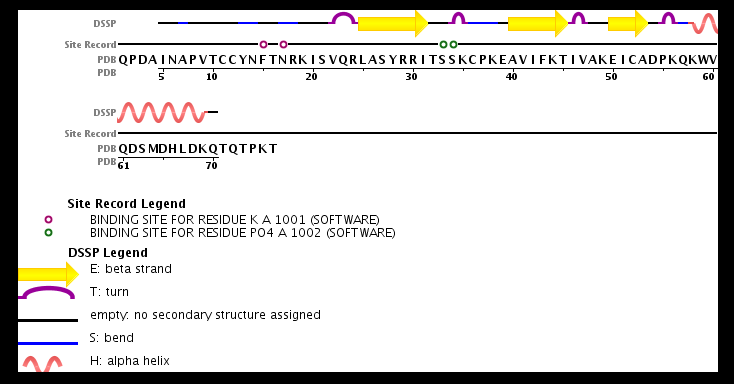Sandbox Reserved 1134
From Proteopedia
(Difference between revisions)
| Line 49: | Line 49: | ||
MCP1 is part of the C-C motif group because of the covalent bond made between <scene name='72/721520/Cv/4'>2 of the 4 cysteines of the N terminal domain</scene>.<ref>PMID:8989326</ref> | MCP1 is part of the C-C motif group because of the covalent bond made between <scene name='72/721520/Cv/4'>2 of the 4 cysteines of the N terminal domain</scene>.<ref>PMID:8989326</ref> | ||
Post translational modifications at the N-terminus can regulate receptor and target cell selectivity. Deletion of the N-terminal residue converts it from an activator of basophil to an eosinophil chemoattractant. | Post translational modifications at the N-terminus can regulate receptor and target cell selectivity. Deletion of the N-terminal residue converts it from an activator of basophil to an eosinophil chemoattractant. | ||
| - | </StructureSection> | ||
| - | |||
| - | [[Image:chaine.png]] | ||
== Synthesis == | == Synthesis == | ||
| Line 58: | Line 55: | ||
MCP1 was crystallized and the structure was determined by X-ray diffraction at 1.9-A resolution. | MCP1 was crystallized and the structure was determined by X-ray diffraction at 1.9-A resolution. | ||
| + | </StructureSection> | ||
| + | |||
| + | [[Image:chaine.png]] | ||
| + | |||
== References == | == References == | ||
https://fr.wikipedia.org/wiki/CCL2 | https://fr.wikipedia.org/wiki/CCL2 | ||
Revision as of 12:56, 27 January 2016
| This Sandbox is Reserved from 15/12/2015, through 15/06/2016 for use in the course "Structural Biology" taught by Bruno Kieffer at the University of Strasbourg, ESBS. This reservation includes Sandbox Reserved 1120 through Sandbox Reserved 1159. |
To get started:
More help: Help:Editing |
| |||||||||||
References
https://fr.wikipedia.org/wiki/CCL2 http://www.ebi.ac.uk/thornton-srv/databases/cgi-bin/pdbsum/GetPage.pl?pdbcode=1DOK http://www.uniprot.org/uniprot/P13500#interaction http://www.rcsb.org/pdb/explore/explore.do?structureId=3IFD
- ↑ Carr MW, Roth SJ, Luther E, Rose SS, Springer TA. Monocyte chemoattractant protein 1 acts as a T-lymphocyte chemoattractant. Proc Natl Acad Sci U S A. 1994 Apr 26;91(9):3652-6. PMID:8170963
- ↑ Ito Y, Ishiguro H, Kobayashi N, Hasumi H, Watanabe M, Yao M, Uemura H. Adipocyte-derived monocyte chemotactic protein-1 (MCP-1) promotes prostate cancer progression through the induction of MMP-2 activity. Prostate. 2015 Jul 1;75(10):1009-19. doi: 10.1002/pros.22972. Epub 2015 Apr 27. PMID:25917126 doi:http://dx.doi.org/10.1002/pros.22972
- ↑ Lubkowski J, Bujacz G, Boque L, Domaille PJ, Handel TM, Wlodawer A. The structure of MCP-1 in two crystal forms provides a rare example of variable quaternary interactions. Nat Struct Biol. 1997 Jan;4(1):64-9. PMID:8989326


